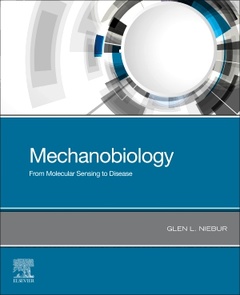Mechanobiology From Molecular Sensing to Disease

Section 1: Mechanobiological basis of diseases1.1 Osteoporosis1.2 Cardiovascular mechanics and disease1.3 Glaucoma and eye diseases1.4 Growth and development1.5 Tissue engineering and regenerative medicine
Section 2: Cellular basis of Mechanobiology 2.1 Cells as strain gages and load cells2.2 Cell – extracellular matrix interactions2.3 Mechanobiological pathways2.4 Mechanically mediated epigenetics
Section 3: Experimental methods3.1 Effects of shear stress on cells3.2 Three-dimensional culture systems3.3 Bioreactors3.4 Tissue and organ on a chip systems
Section 4: Computational simulations in mechanobiology4.1 Cell aggregation4.2 Growth models5. Future prospects and challenges6. Bibliography7. Glossary
Current projects are investigating the interactions between microdamage formation in bone and the changes in bone porosity and structure that accompany osteoporosis. Osteoporosis results in changes at multiple levels of the hierarchical structure of bone, and these can either compensate for or enhance fracture risk. Medical imaging methods, especially computed tomography (CT) are used to image and quantify bone structures in bone samples and in live animals. A current project is using medical imaging to longitudinally monitor and understand fracture healing. Most recently, work has begun in the area of bone marrow mechanics, affects of aging and disease on bone marrow morphology, and interactions between bone and bone marrow.
- Presents our current understanding of the main molecular pathways by which cells sense and respond to mechanical stimuli
- Provides a review of diseases with known or purported mechanobiological underpinnings
- Includes the role of mechanobiology in tissue engineering and regenerative medicine
- Covers experimental methods to capture mechanobiological phenomena
Date de parution : 12-2019
Ouvrage de 254 p.
19x23.3 cm



